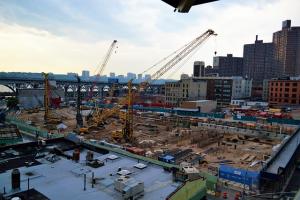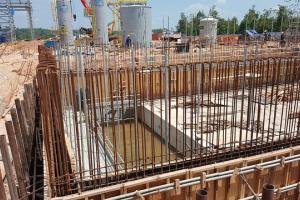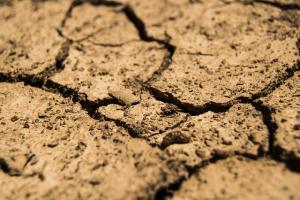Soil Settlement Types, Calculations & Analysis - Settlement Limits
Soil Settlement and Soil Shear:
A soil shear failure can result in excessive building distortion and even collapse. Excessive settlements can result in structural damage to a building frame nuisances such as sticking doors and windows, cracks in tile and plaster, and excessive wear or equipment failure from misalignment resulting from foundation settlements.
It is necessary to investigate both base shear resistance (ultimate bearing capacity) and settlements for any structure. In many cases settlement criteria will control the allowable bearing capacity.
Except for occasional happy coincidences, soil settlement computations are only best estimates of the deformation to expect when a load is applied.
Also Read: ![]() Purpose of Foundation |
Purpose of Foundation | ![]() Steel Structure Failure |
Steel Structure Failure | ![]() Soil Bearing Capacity Analysis |
Soil Bearing Capacity Analysis | ![]() Soil Shear Failure
Soil Shear Failure
A small computed AH of 10mm, where the measured value is 5 or 20 mm, has a large error, but most practical structures can tolerate either the predicted or measured values. What we do not want is an estimate of 25 mm and a subsequent settlement of 100 mm.
Two Major Problems with soil settlement analysis are:
- Obtaining reliable values of the “elastic” parameters
- Obtaining a reliable stress profile from the applied load.
Components of Settlement:
The components of settlement of a foundation are:
- Immediate settlement
- Consolidation Settlement, and
- Secondary compression (creep)
ΔH = ΔHi + U ΔHc + ΔHs
ΔH = total settlement, ΔHc = consolidation settlement, ΔH = secondary compression, U = average degree of consolidation. Generally, the final settlement of a foundation is of interest and U is considered equal to 1 (i.e. 100% consolidation)
1. Immediate Settlement
- Immediate settlement takes place as the load is applied or within a time period of about 7 days.
- Predominates in cohesion less soils and unsaturated clay
- Immediate settlement analysis are used for all fine-grained soils including silts and clays with a degree of saturation < 90% and for all coarse grained soils with large co-efficient of permeability (say above 10.2 m/s)
2. Consolidation Settlement (ΔHc)
- Consolidation settlements are time dependent and take months to years to develop. The leaning tower of Pisa in Italy has been undergoing consolidation settlement for over 700 years. The lean is caused by consolidation settlement being greater on one side. This, however, is an extreme case. The principal settlements for most projects occur in 3 to 10 years.
- Dominates in saturated/nearly saturated fine grained soils where consolidation theory applies.
Here we are interested to estimate both consolidation settlement and how long a time it will take or most of the settlement to occur.
3. Secondary Settlement/Creep (ΔHc)
- Occurs under constant effective stress due to continuous rearrangement of clay particles into a more stable configuration.
- Predominates in highly plastic clays and organic clays.
Also See: GeoTechnical Engineering
Immediate Settlement Calculations
Immediate settlement computation
![]()
Where q0 = intensity of contact pressure in units of Es (Undrained Modulus of Elasticity)
B’ = least lateral dimension of contributing base area in units of ΔHi
Es, μ = Elastic Soil Parameters. A major problem is of course to obtain correct stress-strain modulus Es. Es can be found from laboratory tests like unconfined compression tests,
Triaxial compression tests, and in-situ tests like SPT, CPT, Plate load tests, Pressure meter etc
m = number of corners contributing to settlement ΔHi. At the footing center m= 4; and at a corner m = 1, at a side m = 2.
IF = Embedment reduction factor, which suggests that the settlement is reduced when it is placed at some depth in the ground. For surface footing IF = I
Is = Influence Factor
![]()
The above equation for Is is strictly applicable to flexible bases on the half space. In practice, most foundations are flexible because even every thick footing deflects when loaded by superstructure load. If the base is rigid, reduce Is factor by about 7%. The half space may consist of either cohesion less material or any water content, or unsaturated cohesive soils.
Consolidation Settlement Calculations
Secondary compression/creep
After primary consolidation the soil structure continues to adjust to the load for some additional time. This settlement is termed secondary consolidation/secondary compression. At the end of secondary consolidation the soil has reached a new Ko-state (at-rest state).
Secondary consolidation may be the larger component if settlement in some soils, particularly in soils with a large organic component. Secondary consolidation is associated with both immediate & consolidation type settlements, although it is usually not of much significance with immediate settlements. The magnitude of secondary compression for a given time is generally greater for NCC than for OCC.
The rate of secondary compression Jin the consolidation (oedometer) test can be defined by the slope Cα of the final part of the compression/log time curve. Where Hsl=thickness of the laboratory sample at time t1, ΔHsl = Change in sample thickness of soil sample between t1 and t2.
To find secondary consolidation settlement in the field (ΔHs),
![]()
H = Thickness of the field consolidating stratum at the end of primary consolidation. Commonly initial thickness is used unless the primary consolidation is very large. Say more than 10% of initial thickness.
t100 (f) = time taken for primary consolidation to complete in the field
Δt = time interval beyond t100(f)
t2 = t100 (f) + Δt = time for which secondary settlement is to be calculated.
To find t100 (f) following relationship is used
![]()
Where t100 (lab) and t100 (f) = time taken for primary consolidation to complete in the laboratory df, dlab = are respectively maximum drainage paths in the field and laboratory. For one-way drainage d= thickness of the layer of interest or sample thickness in the laboratory, for two-way drainage d = half of the thickness of the layer of interest/sample.
Settlement Limits
Total settlement is the magnitude of downward movement. Differential settlement is non-uniform settlement. It is "the difference of settlement between various locations of the structure. Angular distortion between two points under a structure is equal, to the differential settlement between the points divided by the distance between them.
Theoretically, no damage will be done to a structure if it settles uniformly as a whole regardless of how large the settlement may be. The only damage would be to the connections of the underground utility lines. However, when the settlement is non-uniform (differential), as is always the case, damage may be caused to the structure.
The tolerable, settlements of different structures, vary considerably. Simple-span frames can take considerably greater distortion than rigid frames. A fixed-end arch would suffer greatly if the abutments settle or rotate. For road embankments, storage silos and tanks a settlement of 300mm - 600mm may be acceptable, but for machine foundations the settlement may be limited to 5mm 30mm. Different types of construction materials can withstand different degrees of distortion. For example, sheet metal wall panels do not show distress as readily as brick masonry.
To reduce differential settlement, the designer may limit the total settlement and use the following equation for the calculation of the differential settlement:
(ΔHdiff) max = ½ ΔHtotal
Guidelines to limiting values are suggested by a number of sources, but following routine limits appear to be conventionally acceptable (Skempton and Mac Donald, 1956)
Sands
Maximum total settlement = 40 mm for isolated footings = 40 to 65 mm for rafts
Maximum differential settlement between adjacent columns = 25 mm
Clays
Maximum total settlement = 65 mm for isolated footings = 65 to 100 mm for rafts
Maximum differential settlement between adjacent columns = 40 mm.
The differential settlement may also be evaluated in terms of the angular distortion given by: (ΔHdiff) = Δ/L
Where Δ = relative settlement between the two points and L = Horizontal distance between the two points. Based on a large number of settlement observations and performance of structures, the suggested limits for tolerable differential settlements are show in table below.
| Angular distortion | Type of limit and structure |
|
1/150 |
Structure damage of general buildings expected |
|
1/250 |
Tilting of high rigid buildings may be visible |
|
1/300 |
Cracking in panel walls expected |
|
|
Difficulties with overhead cranes |
|
1/500 |
Limit for buildings in which cracking is not permissible |
|
1/600 |
Over-stressing of structural frames with diagonals |
|
1/750 |
Difficulty with machinery sensitive to settlement |









